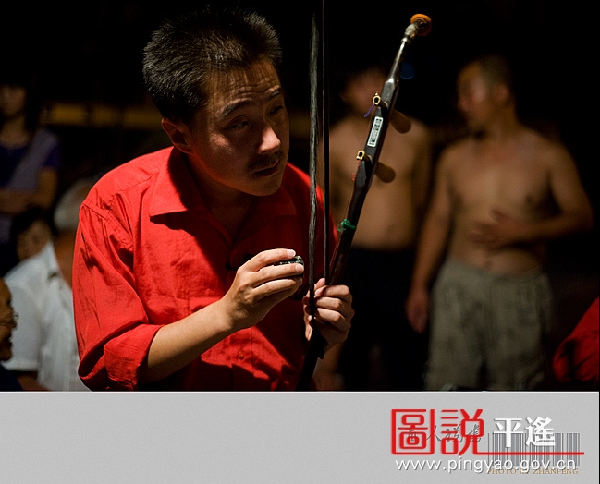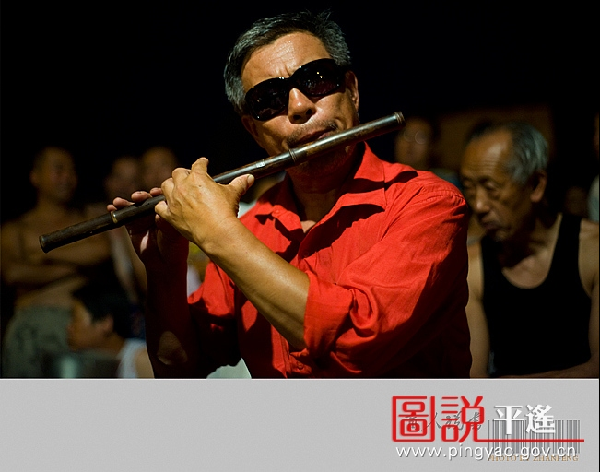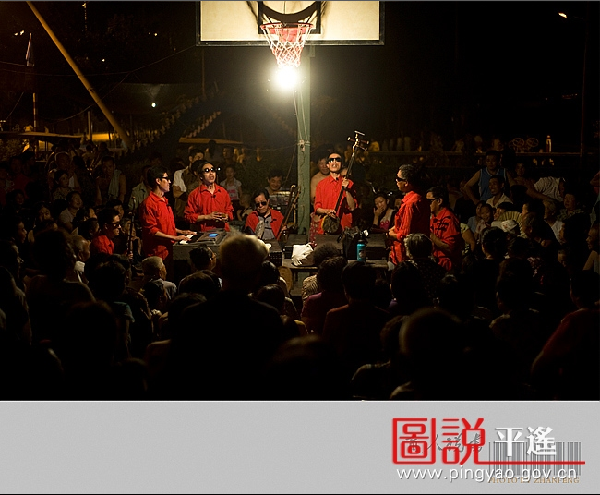 |
| Pingyao's story-telling accompanied by stringed instruments (Photo/Pingyao.gov.cn) |
The town of Pingyao, Shanxi province has an almost 300-year-history of story-telling tradition that uses stringed instruments, and dates back to the Ming Dynasty (1368-1644). The performance was traditionally given by a blind man, sitting in front the audience with a three-stringed instrument, telling folk stories in a sing-song manner, giving it the folk name "Pingyao blind book" or "Blind man's storytelling".
 |
| Pingyao's story-telling accompanied by stringed instruments (Photo/Pingyao.gov.cn) |
The story-telling originally started with simple jokes and anecdotes that the story-tellers made up or picked up themselves, then gradually evolved to include novels and excerpts of classical works and, by the 1950s, also included up many elements form the real lives of people. Pingyao's instrument-accompanied story-telling is a general reflection of the daily lives of working people, their thought patterns, and their taste and a truly representative traditional folk art that is still quite popular in the Pingyao and neighboring area. It is also valuable for scholars doing research on Pingyao's history, society, economy and culture.
 |
| Pingyao's story-telling accompanied by stringed instruments (Photo/Pingyao.gov.cn) |
The earliest story-tellers on record were Wen Mingchang, from the town of Xianghuan, near Pingyao, Chang Yuanlu from the town of Wangjiazhuang, Pei Guangli, from the town of Dongquan, and his son Pei Guangli is the most famous story-telling artis now.